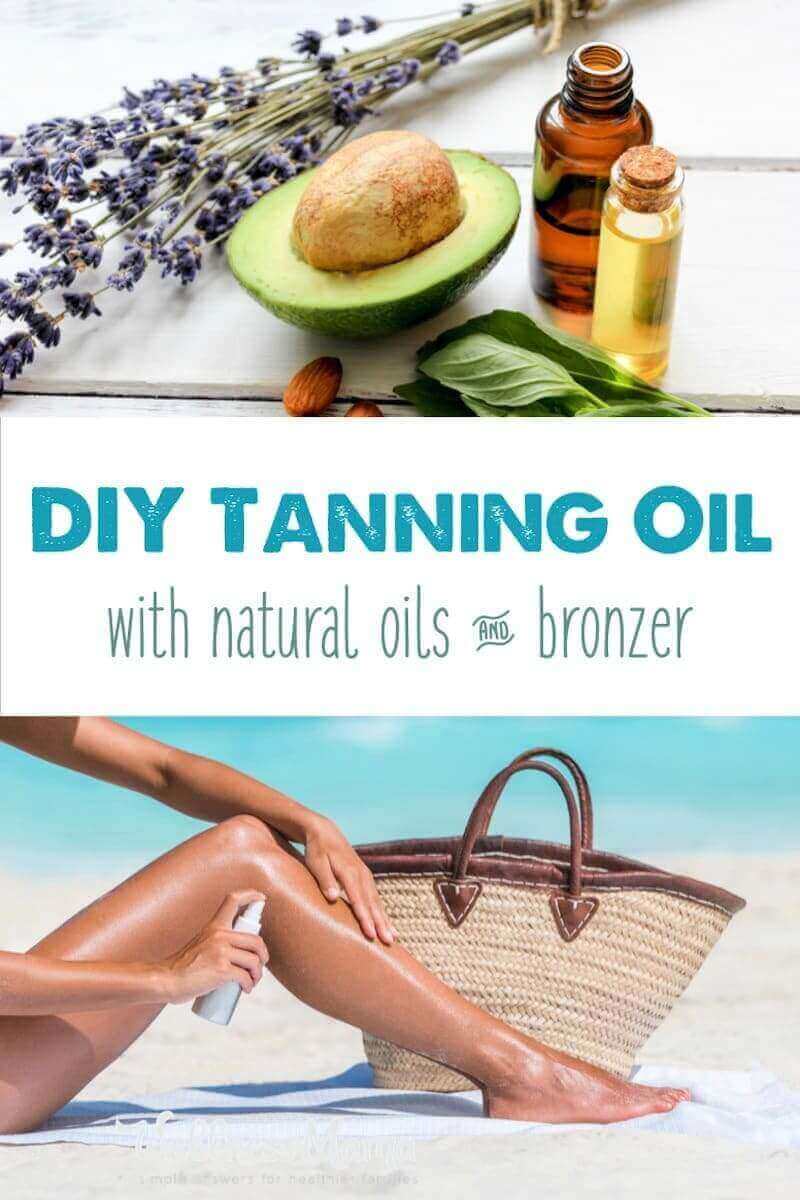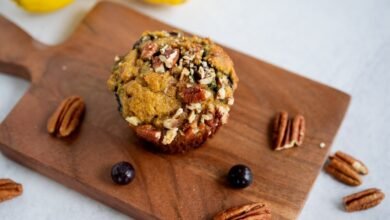DIY Sandalwood Tanning Oil

I’ve used a variation of this homemade tanning oil for years. When a friend recently asked about a natural homemade tanning oil, I figured it was time to share the recipe.
I do occasionally use my homemade sunscreen if I’m going to be out in the sun for a long time. In general though, I prefer to get the free vitamin D from its source via moderate sun exposure. I prefer to eat my sunscreen rather than slather it on my skin…
Sometimes I’m at the beach (which is a lot now we live near one!) or somewhere where I can alternate between sun exposure or the shade of an umbrella and a good book. Here I prefer to just use natural oils that nourish and slightly protect my skin without blocking vitamin D. Unlike many sunscreens do).
DIY Tanning Oil
Though many of my recipes are solid like lotion bars or body butters, this one is a liquid oil. It makes it easier to use when on the go. If you prefer a more solid recipe, you can absolutely make this with virgin coconut oil that hardens at 76 degrees and store it in a small jar.
Sun Protective Natural Ingredients
This is where things get a little controversial and murky. Over a decade ago researchers tested raspberry seed oil and other natural oils to determine their SPF values. The test results showed amazing SPF values of 25 SPF or even up to 50 SPF against UV rays.
However, more recently scientists have pointed out the flaws in these studies. They were done in vitro (not on actual skin) and didn’t follow commonly accepted SPF test guidelines.
A 2021 study found raspberry seed oil is more like 2.6 SPF (not 25-50). Other tested oils included carrot seed, coconut, and wheat germ oils ranged from 0 to 2.8 SPF. The researchers commented that anything below 1 SPF wasn’t providing any sun protection at all.
Another 2010 study looked at the SPF of both carrier oils and essential oils. The carrier oils ranged from 2 to 8 SPF, and essential oils from 1 to 7 SPF. Olive oil and peppermint essential oil scored the highest. But not so fast! This study wasn’t done on human skin and even the authors state their results didn’t nail down final SPF values when used on skin.
Carrot seed oil skin product tests showed an SPF value of almost 7. However, the carrot seed oil was combined with other ingredients for testing.
So is there such a thing as natural SPF oils to help with a safe tanning process?
A Safer Tanning Lotion
While some of the oils used here may or may not have slight measurable SPF protection, they do have other skin benefits. When combined in a homemade tanning oil oil they help to protect and nourish the skin and assist in vitamin D production. It’s important to note that these are not a substitute for regular sunscreen.
- Olive Oil – Has oleic acid that supports clearer skin and phytosterols to attract moisture. It helps repair sun damage and soothes dry skin. It also has high levels of squalene that protect our skin cells and have anti-aging properties. Olive oil has been traditionally used in Mediterranean countries as a natural skin protectant for a dark tan.
- Avocado Oil – Rich in vitamins A, B, and E, proteins, and amino acids. It increases skin’s collagen. Avocado oil is also high in UV-protectant carotenoids to help protect against sun damage.
- Carrot Seed Oil – High in vitamin A beta-carotene and vitamin E to protect against UV rays. This is NOT the same as macerated carrot root oil (which is orange) or carrot seed essential oil. Cold-pressed carrot seed oil is naturally a dark green color and looks more like olive oil.
- Raspberry Seed Oil – High in antioxidant vitamins E and A. Raspberry is also a lighter oil that doesn’t feel greasy when applied.
I also added bronze mica powder for a subtle bronze glow, but you can omit this if you don’t have it or don’t want to use it.
Adding Essential Oils
I used some lavender and sandalwood essential oils for their skin benefits and scent. Indian sandalwood smells sweeter, but Australian sandalwood is more affordable. Because sandalwood is at risk of becoming endangered though it’s important to buy from an ethically harvested source!
You can use different essential oils here or omit them altogether if desired. If you do swap them out for a different essential oil it’s really important to not use phototoxic ones! Certain essential oils like bergamot and cold-pressed lime and lemon can cause really bad skin burns if used before sun exposure.
Important: Sun Exposure Safety
This is not a sunscreen, but a mild sun-protectant recipe. It’s important to test with small amounts of time in the sun to find what works best for your body and skin type. I’m sharing what worked best for me, but tweak it to fit your skin type and desired result.
Of course, all of the usual disclaimers apply: sunburn is never healthy and should absolutely be avoided. You should not spend long periods in the sun, especially if you have very sensitive skin.
If you’re unable to tan, this recipe will not magically help you tan. I’m NOT advocating regular tanning in an electric bed, and only use this for moderate and natural sun exposure. Check with a dermatologist if you’re unsure about any of these ingredients or want to know if this recipe is specifically good for your skin.
Homemade Tanning Oil Recipe
This nourishing and natural tanning oil is easy to make and smells amazing! Get a sun-kissed glow and a darker tan when used with moderate (and safe) sun exposure.
-
Mix all oils and mica powder (if using) and store in a dark-colored glass container. If you decide to substitute coconut oil for olive oil, store it in a jar instead, as it won’t work with a pump.
I use this as needed for mild sun exposure and it’s helped me get a golden tan without burning.
Do you use tanning oil? Ready to try a natural version?

Source link





